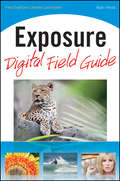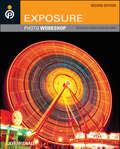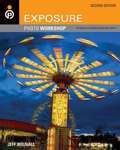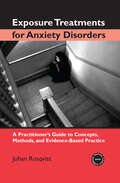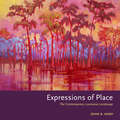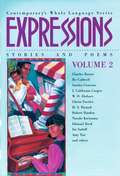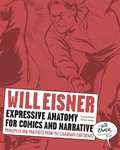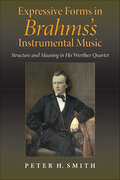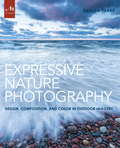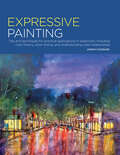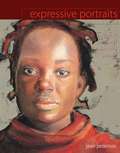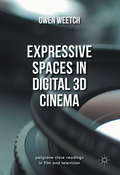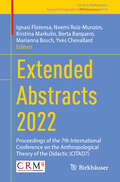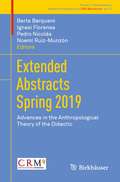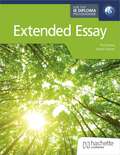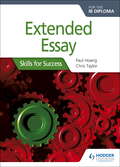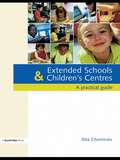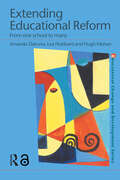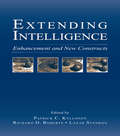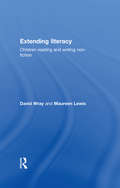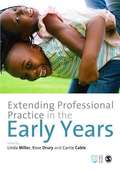- Table View
- List View
Exposure Digital Field Guide
by Alan HessSecrets of exposure revealed, with a bonus color checker card includedExposure is the number one topic that digital photographers want to know about. This full-color book fits in your camera bag and provides all the information you need on this very important aspect of digital photography.Exposure involves combining ISO, aperture, and shutter speed in different variations to accomplish your vision of the perfect image. Exposure Digital Field Guide takes you through the complex techniques of good exposure, taking you from hobbyist to serious amateur photographer.Explains how to adjust shutter speed and aperture to control the amount of light hitting the camera's light sensorTeaches you how to "see the light" for the perfect exposureHelps you gain confidence as you move from automatic controls into manipulating the elements of exposure for specific resultsPacked with stunning full-color photographs to illustrate what you can achieveProvides suggested settings for various shooting situations and subjectsIncludes a tear-out color checker card to help you maintain true colorFits in your camera bag for ready reference in the fieldExposure Digital Field Guide helps you master one of the most complex and intricate elements of digital photography.
Exposure Photo Workshop
by Jeff WignallNamed One of Shutterbug Magazines Top Digital Imaging Books of 2008! Capturing an image and getting the right exposure is critical and Jeff Wignall recognizes exposure as the secret for creating an image that captures a vision and shares it with the world. When you apply his techniques with patience, experimentation, and a focus on the outcome, you will begin creating images that reveal not only what you saw, but how you felt when you saw it. In fact according to Shutterbug magazine Exposure Photo Workshop "may be the best book yet written about exposure. " By learning to work with natural light as well as when to use flash you will confidently capture action, night scenes, rainbows, sunsets, and reflections like never before. With stunning images, Jeff Wignall shows you how to perfectly expose pictures in even the most challenging existing light conditions, including poor weather, using a flash, and even a section guiding you through using multiple wireless flash units. You can upload your own images to Photoworkshop. com and get feedback from other photographers. Wignall starts by explaining the fundamentals of exposure and why it's important. This leads into learning the basics of exposure controls. By the end of chapter 2, you will know how to control the exposure on your point-and-shoot or digital SLR camera. Chapter 3 walks readers through measuring light using just about any light meter and Chapter 4 delves into lens apertures and depth of field. The focus moves to shutter speed and subject motion. After Chapter 6, you'll have the knowledge and confidence to turn off your camera's automatic settings and take manual control. Wignall then examines natural light exposures, discussing the intricacies of light quality, light direction, and time of day. As you approach more advanced exposure options, you'll need the troubleshooting advice provided in Chapter 8, covering difficult situations such as metering challenges, handling contrast, and creating dramatic silhouettes. With more advanced techniques mastered, you can then approach night and low-light conditions and then examine special considerations such as the weather and natural phenomena. The book finishes strong with a comprehensive look at all things flash photography.
Exposure Photo Workshop, 2nd Edition
by Jeff WignallNew and updated techniques for working with exposure Exposure involves a variety of skills, but once mastered, can turn a hobbyist into a bona fide photographer. This hands-on resource dissects the components of exposure--ISO, aperture, shutter speed--and shows how they work together to capture the photographer's vision. You'll learn how to leave the safety of automatic settings and understand how controlling the settings can result in beautiful photos. Stunning photos of people, wildlife, and landscapes serve to inspire you to practice your new skills in exposure and create memorable and frame-worthy photos. Unveils the many intricate levels of exposure and clearly explains how to master each one so that you can capture amazing photos Encourages you to apply each of the techniques you learn with patience and experimentation when photographing people, wildlife, landscapes, or any other subject matter Details the essentials for taking frame-worthy photos in a variety of challenges, such as action, night scenes, low light, bad weather, and more Features updated, stunning, and inspiring full-color photos throughout Expose yourself to the fantastic and unparalleled advice contained within the pages of Exposure Photo Workshop, Second Edition!
Exposure Treatments for Anxiety Disorders: A Practitioner's Guide to Concepts, Methods, and Evidence-Based Practice (Practical Clinical Guidebooks)
by Johan RosqvistExposure Treatments for Anxiety Disorders is a unique volume, as it draws together the latest research on the rapidly-expanding field of anxiety disorders and illuminates how to correctly apply the proven methodology of behavioral therapy techniques to the variety of situations that face today's mental health professional. That said, cognitive therapy has in the last 10 years gotten increased attention as an alternative to behavior therapy in the treatment of anxiety disorders. But while it is gaining acceptance among practitioners, cognitive therapy has yet to illustrate substantial benefits above those that behavior therapy can already provide. In light of the aforementioned, coupled with the pressure many practitioners feel from managed care paradigms and shrinking healthcare coverage, this book will be a welcome resource allowing for increased clarity of action, accountability, and ultimately, positive client outcome. Each chapter is designed to address pivotal aspects in the assessment, formulation and diagnosis, and treatment of anxiety disorders, to a sufficient depth that the generalist practitioner will be comfortable using this book as a guide when working with the anxiety disordered client.
Expressions of Place: The Contemporary Louisiana Landscape
by John R. KempExpressions of Place embarks on a journey across the rural and urban landscapes of Louisiana via the talents of thirty-seven artists located all around the state. Many are acclaimed professionals whose paintings are included in major private and public collections regionally and nationally. Others have found their followings closer to home. All, however, strive to express impressions of the land with artistic styles that range from traditional to the symbolic and almost totally abstract. Such a variety of interpretation becomes possible in a landscape that changes from dark cypress-shrouded bayous, trembling earth, grassy prairies, the gritty streets of inner city New Orleans to vast wind-swept coastal marshes and the piney hills of north and central Louisiana. Rather than stand as an encyclopedia, catalog, or history of the visual arts in Louisiana, Kemp's book is instead a celebration of the state's evocative landscape in the work of accomplished contemporary artists. It includes an introductory essay, which places these creators and their works in historical context. Expressions of Place provides readers with individual essays and biographical sketches in which the artists, in their own words, give insight as to what they paint, how they paint, where they paint, and why they are drawn to the Louisiana landscape. Particularly inspiring, the artists discuss their interpretations of that landscape directly with the viewing audience. Expressions of Place remains as much about the landscape of the artists' imaginations as it is about the land itself. With each painting, they have created visual poetry of a land and environment that has become a defining part of their lives.
Expressions: Stories and Poems (Volume #2)
by Pat FieneThis book integrates reading, writing, thinking, listening, and speaking skills, by reflecting on 10 stories and 10 poems by famous authors.
Expressive Anatomy for Comics and Narrative: Principles and Practices from the Legendary Cartoonist (Will Eisner Instructional Books)
by Will EisnerThe final volume of Will Eisner's celebrated instructional trilogy explores the critical principle of body grammar in comics storytelling. Designed and outlined by Will Eisner before his death in 2005, this posthumous masterwork, the third and final book in the Will Eisner Instructional Series, finally reveals the secrets of Eisner's own techniques and theories of movement, body mechanics, facial expressions, and posture: the key components of graphic storytelling. From his earliest comics, including the celebrated Spirit, to his pioneering graphic novels, Eisner understood that the proper use of anatomy is crucial to effective storytelling. His control over the mechanical and intuitive skills necessary for its application set him apart among comics artists, and his principles of body grammar have proven invaluable to legions of students in overcoming what is perhaps the most challenging aspect of creating comics. Buttressed by dozens of illustrations, which display Eisner's mastery of expression, both subtle and overt, Expressive Anatomy for Comics and Narrative will benefit comics fans, students, and teachers and is destined to become the essential primer on the craft.
Expressive Forms in Brahms's Instrumental Music: Structure and Meaning in His Werther Quartet (Musical Meaning and Interpretation)
by Peter H. Smith"This book is a substantial and timely contribution to Brahms studies. Its strategy is to focus on a single critical work, the C-Minor Piano Quartet, analyzing and interpreting it in great detail, but also using it as a stepping-stone to connect it to other central Brahms works in order to reach a new understanding of the composer's technical language and expressive intent. It is an original and worthy contribution on the music of a major composer." —Patrick McCrelessExpressive Forms in Brahms's Instrumental Music integrates a wide variety of analytical methods into a broader study of theoretical approaches, using a single work by Brahms as a case study. On the basis of his findings, Smith considers how Brahms's approach in this piano quartet informs analyses of similar works by Brahms as well as by Beethoven and Mozart.Musical Meaning and Interpretation—Robert S. Hatten, editor
Expressive Nature Photography: Design, Composition, and Color in Outdoor Imagery
by Brenda TharpPhotographer and teacher Brenda Tharp marries photography craft with artistic vision to help intermediate photographers translate what they see into a personal impression of a subject in nature. Using single images, along with before-and-after and with-or-without examples, Expressive Nature Photography teaches how to make exposures that are creative, not necessarily correct. Inspiring photographers to get out early and stay out late, this book explains how to use light, an essential element of outdoor photography. Readers will learn how to “see in the dark,” use filters to create very long exposures, create a natural effect using light painting, photograph night skies and moonlit landscapes, and make the best use of available natural light. This book also covers how to use shutter speeds to express motion and capture the energy of fast-moving subjects, such rushing streams, ocean swells, and bounding wildlife. A chapter on the art of visual flow discusses how to create compositions that direct the viewer's eye through the frame for maximum impact. Photographers will develop a sense of when to break the "rules" of composition, how to use elements to frame subjects, what to include and exclude in the frame, how to create the feeling of depth and dimension in a scene, and how to push the boundaries of composition to make memorable nature images that capture and convey fresh viewpoints. High-tech cameras can help create a good exposure and focused image, but they can't replace the artist's eye for composition, visual depth, and design, nor their instinct for knowing when to click the shutter. There are many books on photography technique focused on technical quality, but Expressive Nature Photography goes beyond the technical. It guides the way to pulling emotion and meaning out of a dynamic landscape, a delicate macro study, or an outstanding nighttime image.
Expressive Oil Painting: An Open Air Approach to Creative Landscapes
by George Allen DurkeeBecome a Landscape PainterThere's a world of difference between painting what you see and conveying what you feel. Expressive Oil Painting shows you how to create engaging landscapes that capture a sense of light, depth, movement and above all, your own unique impressions of the world around you.Within Expressive Oil Painting, discover:Fundamental concepts of oil painting—including supplies, work habits, drawing, color and composition—explained in a friendly, straightforward wayA diverse sampling of ideas and approaches for painting landscape elements, capturing mood, painting en plein air, simplifying the complexity of nature and determining reference valuesNine in-depth landscape painting demonstrations illustrating techniques from basic to advancedWhether you're working on location or from reference photos, this book will empower you to pain "light on your feet," improvising according to the needs of each particular subject and the conditions of the moment. With nature as your inspiration and this book as your guide, you'll find your way straight to the heart of landscape painting, bringing greater sensitivity, intuition and authenticity to your work.
Expressive Painting: Tips and Techniques for Practical Applications in Watercolor, including Color Theory, Color Mixing, and Understanding Color Relationships
by Joseph StoddardThe ultimate beginner’s guide to conveying mood and emotion on canvas with vibrant watercolors: “Filled with page after page of very useful knowledge.” —Arts & ActivitiesExpressive Painting follows the same clean, contemporary, easy-to-read, and easy-to-follow layout and design of the other books in Walter Foster Publishing’s popular Portfolio series. It covers essential painting topics, including color theory, color mixing, selecting color schemes, and working with tools and materials, as well as watercolor painting techniques, such as painting wet-into-wet and wet-on-dry. Helpful tips are called out throughout the book for easy comprehension and reference, while step-by-step projects build on the featured techniques, allowing artists to practice making their own dynamic, colorful watercolor paintings. With Expressive Painting, beginning and aspiring artists will learn all they need to know to start creating watercolor art that’s full of color and emotion.The Portfolio series covers essential art techniques, core concepts, and media with an approach and format that’s perfect for aspiring, beginning, and intermediate artists.Also available from the series: Beginning Acrylic, Beginning Drawing, Beginning Watercolor, Beginning Pastel, Beginning Colored Pencil, Beginning Color Mixing, Beginning Pen & Ink, and Beginning Composition.
Expressive Portraits
by Jean PedersonPaint beautiful and expressive portraits by combining watercolor with other mediums! What makes an eye-popping, eye-stopping portrait? It's all about contrast and the play of opposites, round shape against square, light against dark, transparent with opaque. Combining mediums allows you to push the inherent properties of each for a lively play of opposites. You'll be able to paint glorious lights, richer darks, intriguing texture and mysterious passages that create mood and a strong sense of place, space and character. Jean Pederson gives you all the advice and instruction you need to paint beautiful, expressive portraits filled with life and spirit. Let your portraits speak to the world!
Expressive Spaces in Digital 3D Cinema
by Owen WeetchThis book puts forward a more considered perspective on 3D, which is often seen as a distracting gimmick at odds with artful cinematic storytelling. Owen Weetch looks at how stereography brings added significance and expressivity to individual films that all showcase remarkable uses of the format. Avatar, Gravity, The Hole, The Great Gatsby and Frozen all demonstrate that stereography is a rich and sophisticated process that has the potential to bring extra meaning to a film's narrative and themes. Through close reading of these five very different examples, Expressive Spaces in Digital 3D Cinema shows how being sensitive to stereographic manipulation can nuance and enrich the critical appreciation of stereoscopic films. It demonstrates that the expressive placement of characters and objects within 3D film worlds can construct meaning in ways that are unavailable to 'flat' cinema.
Extended Abstracts 2022: Proceedings of the 7th International Conference on the Anthropological Theory of the Didactic (CITAD7) (Trends in Mathematics #16)
by Marianna Bosch Yves Chevallard Berta Barquero Ignasi Florensa Noemí Ruiz-Munzón Kristina MarkulinThis book includes contributions from the conference held in Barcelona in 2022. It brings together researchers interested in the Anthropological Theory of the Didactic (ATD) and aims at the following objectives: Establishing an updated overview of the results and progress in the ATD, concerning both basic research and the development of education systems, including teacher education; Developing a research programme around the most relevant open problems, either related to difficulties affecting education systems or the development of didactics as a scientific discipline; Identifying and studying the specific problems raised by the extension of the ATD’s conceptual and methodological tools to other fields. The conference is structured around the following thematic axis: Axis 1: Development of the foundations, tools and aims of research in the framework of the ATD – Axis 2: The Curriculum Problem and the paradigm of questioning the world – Axis 3: ATD and the professionalization of the teaching profession.
Extended Abstracts Spring 2019: Advances in the Anthropological Theory of the Didactic (Trends in Mathematics #13)
by Berta Barquero Ignasi Florensa Pedro Nicolás Noemí Ruiz-MunzónThe book presents research works developed within the Anthropological Theory of the Didactic (ATD) by senior and young researchers that participated in the Intensive Research Program “Advances in the anthropological theory of the didactic and their consequences in curricula and teacher education” held at the Centre de Recerca Matematica (CRM) in Barcelona. It is organized in three axes of current research on the ATD: teacher education and the professionalization of teaching; the curriculum problem in the historical transition from the classical paradigm of visiting works to the emerging didactic paradigm of questioning the world; and research in didactics at the university level.
Extended Essay for the IB Diploma (For the IB Diploma)
by Paul Hoang Joseph KoszaryUnlock the path to excellence with Extended Essay for the IB Diploma, developed in cooperation with the International Baccalaureate®. Aligned with the latest IB syllabus (first teaching 2025/first assessment 2027), this comprehensive resource is designed to build confidence and clarity at every stage of the Extended Essay journey.- Proven strategies for success: Equip students with expert insights, and effective techniques and strategies for achieving top marks. - Focused on student clarity and confidence: From citation and critical thinking to IB-specific requirements, each chapter is crafted to simplify complex concepts and give students the confidence they need to succeed. - Step-by-step guidance: From topic selection to final reflection, every chapter provides structured support for a seamless writing process. - Focus on academic integrity and responsible AI use: Help students uphold academic honesty and navigate AI responsibly in academic writing. - Real-world relevance and interdisciplinary insight: Encourage deeper exploration and problem-solving that transcends classroom boundaries.
Extended Essay for the IB Diploma (For the IB Diploma)
by Paul Hoang Joseph KoszaryUnlock the path to excellence with Extended Essay for the IB Diploma, developed in cooperation with the International Baccalaureate®. Aligned with the latest IB syllabus (first teaching 2025/first assessment 2027), this comprehensive resource is designed to build confidence and clarity at every stage of the Extended Essay journey.- Proven strategies for success: Equip students with expert insights, and effective techniques and strategies for achieving top marks. - Focused on student clarity and confidence: From citation and critical thinking to IB-specific requirements, each chapter is crafted to simplify complex concepts and give students the confidence they need to succeed. - Step-by-step guidance: From topic selection to final reflection, every chapter provides structured support for a seamless writing process. - Focus on academic integrity and responsible AI use: Help students uphold academic honesty and navigate AI responsibly in academic writing. - Real-world relevance and interdisciplinary insight: Encourage deeper exploration and problem-solving that transcends classroom boundaries.
Extended Essay for the IB Diploma: Skills for Success
by Chris Taylor Paul HoangBuild confidence in a range of key essay writing techniques and skills with this practical companion, full of advice and guidance from experienced EE experts.· Build essay writing techniques and skills through a range of strategies, serving as a useful companion throughout the writing process - from the development of a research question, critical-thinking, referencing and citation to reflecting on the process and final essay· Concise, clear explanations help you navigate the IB requirements, including advice on assessment objectives and academic honesty· Learn what is required to get the best EE grades and write an excellent essay with detailed examiner advice and expert tips and hints, including common mistakes to avoid · Explicit reference to the IB Learner profile and the importance of reflection. Paul Hoang is Vice Principal at Sha Tin College, English Schools Foundation in Hong Kong. He writes for Business Review, published by Philip Allan. He is a member of the editorial board for IB Review, Philip Allan's flagship publication for the IB. Paul is the author of several publications including Economics for the IB Diploma Revision Guide (Hodder Education), IB Business Management, 3rd edn (IBID Press), IGCSE Business Studies for Edexcel (Anforme), and Cambridge IGCSE and O Level Economics (Hodder Education). He is an IB examiner and has over 10 years of experience as an IB Workshop Leader.Chris Taylor is Extended Essay Coordinator at Sha Tin College - an international school and IB World School with over 1200 students. He teaches IB History and has examined the EE component of the Diploma for over 10 years. Chris authored Riding the Dragon (2013), a book that details his visits to every province in China and the culture, history and people in each of these. He is a regular contributing author of IB Review magazine, specialising in IB History and the Extended Essay. Having visited many countries, Chris is also a travel writer for the South China Morning Post, Hong Kong's leading English language newspaper.
Extended Essay for the IB Diploma: Skills for Success
by Chris Taylor Paul HoangBuild confidence in a range of key essay writing techniques and skills with this practical companion, full of advice and guidance from experienced EE experts.· Build essay writing techniques and skills through a range of strategies, serving as a useful companion throughout the writing process - from the development of a research question, critical-thinking, referencing and citation to reflecting on the process and final essay· Concise, clear explanations help you navigate the IB requirements, including advice on assessment objectives and academic honesty· Learn what is required to get the best EE grades and write an excellent essay with detailed examiner advice and expert tips and hints, including common mistakes to avoid · Explicit reference to the IB Learner profile and the importance of reflection. Paul Hoang is Vice Principal at Sha Tin College, English Schools Foundation in Hong Kong. He writes for Business Review, published by Philip Allan. He is a member of the editorial board for IB Review, Philip Allan's flagship publication for the IB. Paul is the author of several publications including Economics for the IB Diploma Revision Guide (Hodder Education), IB Business Management, 3rd edn (IBID Press), IGCSE Business Studies for Edexcel (Anforme), and Cambridge IGCSE and O Level Economics (Hodder Education). He is an IB examiner and has over 10 years of experience as an IB Workshop Leader.Chris Taylor is Extended Essay Coordinator at Sha Tin College - an international school and IB World School with over 1200 students. He teaches IB History and has examined the EE component of the Diploma for over 10 years. Chris authored Riding the Dragon (2013), a book that details his visits to every province in China and the culture, history and people in each of these. He is a regular contributing author of IB Review magazine, specialising in IB History and the Extended Essay. Having visited many countries, Chris is also a travel writer for the South China Morning Post, Hong Kong's leading English language newspaper.
Extended Schools and Children's Centres: A Practical Guide
by Rita CheminaisFeaturing helpful checklists, models of good practice, templates and photocopiable resources that can be used in development work, this highly practical book will be an invaluable resource for anyone involved with implementing Every Child Matters in extended schools and children’s centres. As well as setting out roles and expectations, this unique book clearly and thoroughly explains how to: implement and meet the five ECM outcomes for well-being provide extended services and wraparound care work in partnership with agencies and private, voluntary and community sector providers quality-assure and evaluate the impact of provision and care self-review, monitor and evaluate the ECM outcomes in line with national standards and OFSTED. From leaders and managers, to front-line staff and volunteers, everyone will find this step-by-step handbook packed with useful advice and suggestions for further reading, websites and resources.
Extending Educational Reform: From One School to Many
by Lea Hubbard Hugh Mehan Amanda DatnowIn an effort to improve student achievement, thousands of US schools have adopted school reform models devised externally by universities and other organizations. Such models have been successful in improving individual schools or groups of schools, but what happens when educational reform attempts to extend from one school to many?Through qualitative data from several studies, this book explores what happens when school reform 'goes to scale'. Topics covered include:*why and how schools are adopting reforms*the influence of the local context and wider constraints on the implementation of reform*teachers and principals as change agents in schools*the evolution of reform design teams*the implementation, sustainability and expiration of reform, and its impact on educational changeEach chapter concludes with guidelines for policy and practice.This book will be of interest to educational leaders and staff developers, educational researchers and policy makers, in the US and internationally.
Extending Educational Reform: From One School to Many
by Lea Hubbard Hugh Mehan Amanda DatnowIn an effort to improve student achievement, thousands of US schools have adopted school reform models devised externally by universities and other organizations. Such models have been successful in improving individual schools or groups of schools, but what happens when educational reform attempts to extend from one school to many?Through qualitative data from several studies, this book explores what happens when school reform 'goes to scale'.Topics covered include: why and how schools are adopting reforms the influence of the local context and wider constraints on the implementation of reform teachers and principals as change agents in schools the evolution of reform design teams the implementation, sustainability and expiration of reform, and its impact on educational change Each chapter concludes with guidelines for policy and practice. This book will be of interest to educational leaders and staff developers, educational researchers and policy makers, in the US and internationally.
Extending Intelligence: Enhancement and New Constructs (Educational Psychology Series)
by Richard D. Roberts Patrick C. Kyllonen Lazar StankovThis volume presents research from a variety of perspectives on the enhancement of human intelligence. It is organized around five themes – enhancement via instruction; enhancement via development (over the life cycle); enhancement over time; enhancement via new constructs; and new directions in enhancement. Three key issues are addressed: First, although most of the scientific research on intelligence has concerned what it is, this volume attends to the consequential societal and economic issue concerns of whether it can be increased, and how. Second, intellectual enhancement is particularly important when targeted to minorities and the poor, groups that have typically performed relatively less well on intelligence and achievement measures. This volume reflects the education community's ongoing interest in understanding, and attempting to close, achievement or test score gaps. Third, most of the attention to examining intellectual enhancement, and in accounting for and closing the test-score gap, has focused on general cognitive ability. In line with the current emphasis on considering intelligence from a wider perspective, this volume includes constructs such as emotional and practical intelligence in definitions of intellectual functioning. Extending Intelligence: Enhancement and New Constructs is an essential volume for researchers, students, and professionals in the fields of educational psychology, intelligence, educational measurement and assessment, and critical thinking.
Extending Literacy: Developing Approaches to Non-Fiction
by David Wray Maureen LewisOne of the most problematic areas in the teaching and development of literacy appears to concern children's interactions with non-fiction books. Many surveys and reports have commented on the tendency for children to do little more than copy out sections of non-fiction texts. The Exeter Extending Literacy (EXEL) project was set up with the aim of exploring ways in which non-fiction might be used more effectively and profitably than this.In this book David Wray and Maureen Lewis outline the thinking behind the project and describe in detail the many useful teaching strategies and approaches which were developed in collaboration with primary teachers across the country.Teachers of children from five to fourteen will find this book both a stimulating account of a very influential development project and a useful source of practical teaching ideas.
Extending Professional Practice in the Early Years
by Carrie Cable Dr Linda Miller Rose DruryExtending Professional Practice in the Early Years is aimed at early years practitioners engaged in on-going learning and working in a diverse range of settings. It will be of interest to those undertaking undergraduate and postgraduate training in early years, and those involved in continuing their professional development. It is a valuable and unique resource for those in the later stages of their professional development. The book encourages readers to take a critical stance in relation to a wide range of themes and issues which are reflected in the four parts of the book: - listening to children - diversity and transitions - pedagogy and practice - leadership and change. Throughout the book, authors reflect common concerns such as the rights of children, diversity and a more holistic approach to working with young children, and highlight key research in the field.
